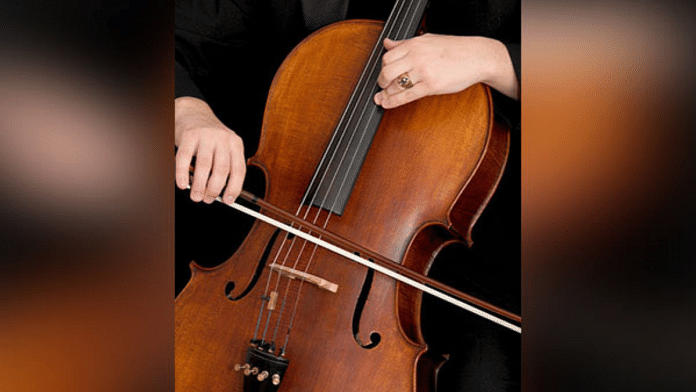Music is one of humanity’s most treasured gifts — and not just because it entertains us.
Recent studies suggest that Indian ragas, a classical form of Indian music, can be a powerful force for improving physical and emotional well-being, including in the medical context for people undergoing medical treatment.
Research suggests listening to them could improve mood and promote peace in healthcare settings. Rhythm can be a powerful force as part of wider medical treatments and could potentially play a valuable role in wider public health initiatives. This could also be pivotal for cultural sustainability.
Research suggests two possible avenues: music as therapy, and music as medicine.
Music therapy aims to help patients work through psychological or emotional struggles they may be encountering at any given time. It engages with all aspects of therapy that one would encounter in a typical therapy session, but does so assisted by music.
Music medicine, or music RX, focuses more on the clinical benefits that music can offer to improve patient care.
Music medicine can be distinguished from music therapy primarily in that those administering “music medicine” have not acquired certification as music therapists. Music medicine is a broader term that encompasses situations where a doctor may utilise music in caring for their patient, even if they are not an accredited music therapist.
The soothing impact of music therapy
Being diagnosed with an illness is disheartening and often confusing, prompting a sense of helplessness and hopelessness.
This kind of emotional discomfort can be addressed with an alternative healing approach: Raga-based music therapy, which uses traditional Indian ragas to improve the well-being of those who are suffering, by improving their sleep and alleviating anxiety and its associated somatic symptoms.
With the ability to bridge the emotional chasm between body and mind, the soothing sounds of these melodies bolster comfort regardless of culture or context. This form of therapy holds promise for individuals battling chronic pain, for example, or who need to lower their heart rate or improve general health. By introducing Indian ragas into medical treatment as a response to physical and mental well-being, today’s technological advances are now allowing us to create opportunities that may have in other times seemed untenable.
Research suggests that the scale, tempo and composition of ragas can have a profound impact on our health, from reducing stress to improving sleep quality. With such incredible potential to heal, it’s no wonder many are turning to this ancient form of medicine.
Indian ragas offer a unique way to reduce patient stress and ease pain, while also providing a familiar form of entertainment and comfort that can promote healing and mental well-being. By incorporating this form of music into daily healthcare routines, we can provide broader access to music therapy for many patients who may have otherwise not been able to experience its benefits.
However, more research is needed on how Indian ragas specifically can be used to treat different common health issues and how we can effectively integrate them into healthcare settings.
Indian ragas and health, in numbers
Indian ragas have been closely linked to positive healthcare outcomes for decades. In a study conducted by the Indian Council of Medical Research, 65% of participants experienced improved cardiac health after listening to Indian ragas intermittently.
Moreover, 55% of them reported an increased sense of mental well-being. Perhaps unsurprisingly, subjects who listened to these ragas had significantly lower stress levels than those who did not — a finding that affirms the long-held cultural understanding of the power of Indian music as a form of medicinal therapy. Along with various other research studies, a growing body of evidence suggests that Indian melodies can provide physical and psychological benefits in medical or therapeutic contexts.
Integrating ragas into treatment
Empirical evidence suggests music can improve outcomes in healthcare, both for the patient and the healthcare workforce.
A music-based intervention known as music RX: music as medicine, which is the therapeutic use of music in medicine. Music RX has been proven to reduce stress and improve relaxation.
Integrating Indian ragas into music RX holds the potential to deliver positive outcomes due to its age-old heritage; the form of music encourages spiritual connection and increased empathy.
Physicians can implement Indian ragas into their music RX interventions in five ways: by providing music during procedures, using them therapeutically during consultations, offering interactive music experiences to patients, recommending music listening as follow-up care between visits and integrating music into staff meetings. These practices have been proven to improve patient satisfaction scores, foster healthier work environments and offer more meaningful relationships with patients.
Indian ragas hold tremendous potential in the healthcare industry. By introducing raga-based music therapy, utilising the science behind the ragas, implementing raga-based music therapy methods into healthcare settings and understanding the role of professionals in this form of treatment, Indian ragas could become an important part of physicians’ wider medical interventions.
This, ultimately, would only improve the lives of patients — at a time when they need it most.
Healthcare institutions need to give more prominence to this form of medicine by exploring its scope and drawing on a combination of art, empathy and innovation to provide our society with the best care.
Smriti Kirubanandan is Global Director & Head, Strategic Marketing Healthcare and Lifesciences, Tata Consultancy Services
This article was first published at World Economic Forum. You can read the article here.
Also read: Polish won’t solve your nail problems. But home remedies and regular trimming helps



